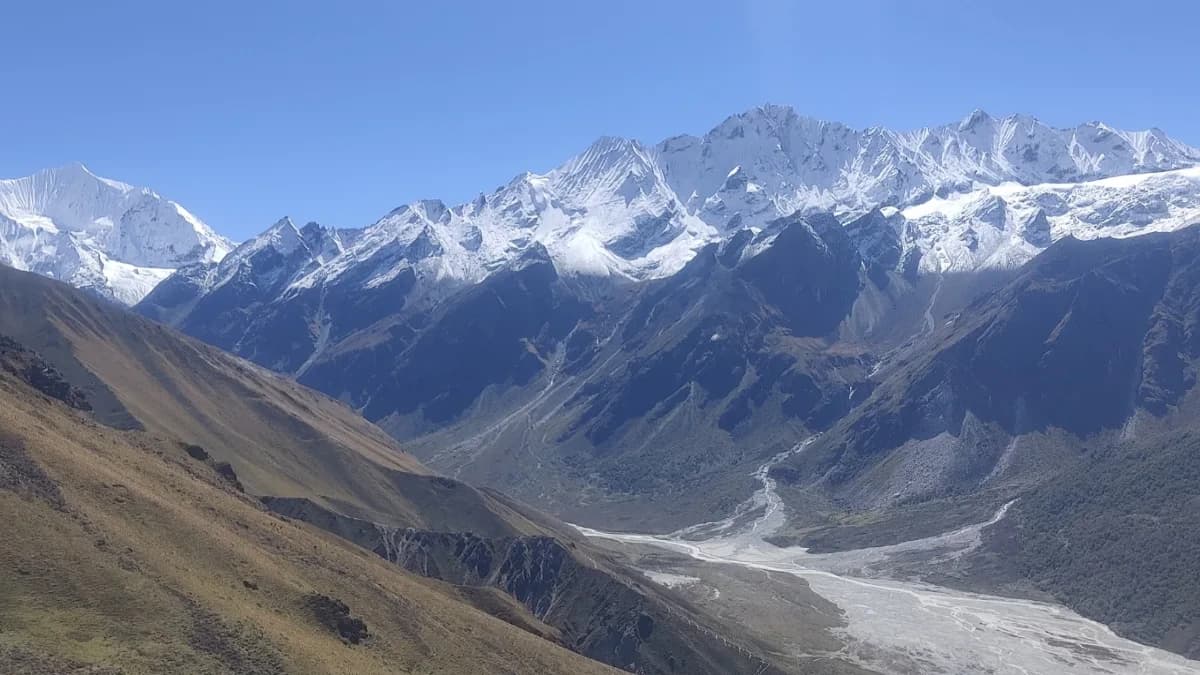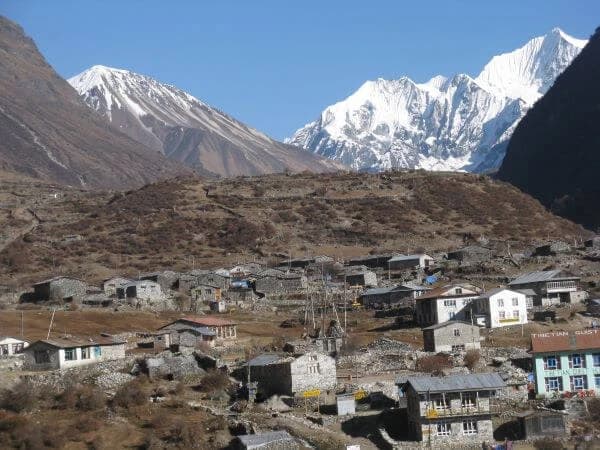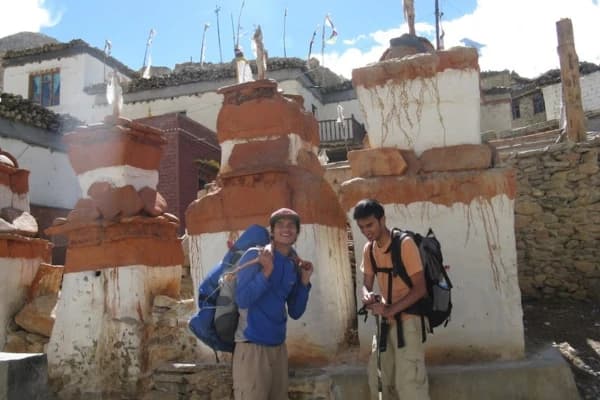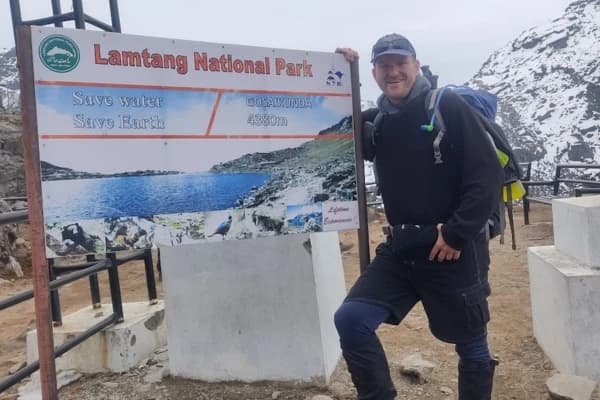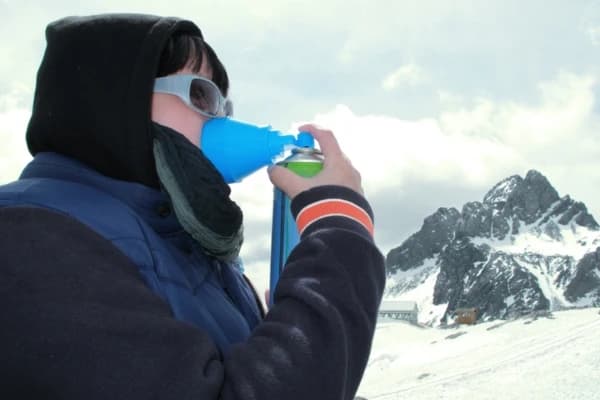The Langtang Valley Trek is a beautiful 10-day hike starting from Syabrubesi and ending at Kyanjin Gompa, which is about 3,870 meters high. This trek is great for beginners who are in good shape because the journey goes up gradually, giving your body time to get used to the higher altitude. The path takes you through lovely forests, open meadows, and peaceful mountain villages where you can see old monasteries.
It's not a very hard trek and is near Kathmandu, so you can get to the starting point easily without long travel. Bringing a detailed Langtang Valley Trek map helps you know where you are, how far to the next stop, and shows important places you don't want to miss. Proper preparation will make this a safe and unforgettable trip to the Himalayas.
Overall, it’s a moderate and scenic trek suitable for new trekkers who want to experience Nepal’s mountains and culture in a peaceful setting.
Secure your spot now for the Langtang Valley Trek with Nepal Gateway Trekking. Limited seats are filling fast this peak season!
Langtang Valley Trek Route Overview
The Langtang Valley Trek is one of Nepal’s best short treks. It is perfect for people who want to see the Himalayas but don’t want to travel far from Kathmandu. The trek is usually 8 to 10 days. It starts with a beautiful drive from Kathmandu to Syabrubesi and then goes deep inside Langtang National Park.The trail passes through lush rhododendron forests, traditional Tamang villages, yak pastures, and finally ascends to the breathtaking Kyanjin Gompa surrounded by snow-capped peaks.
- Duration: 8–10 days (Kathmandu → Syabrubesi → Lama Hotel → Langtang Village → Kyanjin Gompa → Lama Hotel → Syabrubesi → Kathmandu)
- Difficulty: Moderate. Suitable for beginners with average fitness levels.
- Highest Point: Around 4,984 meters (Tserko Ri viewpoint).
- Best Time to Go: Spring (March–May) and Autumn (September–November) for clear skies and pleasant temperatures.
- Why People Love It: The Langtang Valley Trek offers a blend of Himalayan scenery, Tamang and Tibetan-influenced culture, serene valleys, and less crowded trails compared to Everest or Annapurna. The stunning sunrise views from Kyanjin Ri and Tserko Ri make it a photographer’s paradise.
Why Carrying a Trek Map is Important?
Carrying a trek map ensures safety, helps track altitude and distance, guides you to landmarks, and is essential for emergencies.
A trek map is very important for the Langtang Valley Trek. It helps you stay on the right trail through forests and mountain paths. The map also helps you learn about the area’s land, villages, and culture. Even if you have a guide, carrying your own map gives you more freedom and makes your trek easier and more enjoyable.
- Safety: Keeps you stay on track, avoid wrong turns, and find nearby teahouses or shelters easily.
- Planning: Lets you measure daily walking distances, check altitude gain, and plan rest stops effectively.
- Emergencies: Highlights the nearest villages, water sources, and possible exit routes in case of bad weather or injury.
- Cultural Insight: Shows traditional Tamang and Tibetan villages, monasteries, and scenic viewpoints like Kyanjin Ri and Tserko Ri.
Whether you’re a first-time trekker or a seasoned hiker, carrying a Langtang Valley Trek map gives you confidence, safety, and a deeper connection to the beautiful landscapes and cultures you pass along the way.
Daily Trek Itinerary with Map

The Langtang Valley Trek normally takes about 10 days, including the days you arrive and leave. After you arrive in Kathmandu, the trek will start from the second day with a drive from Kathmandu to Syabrubesi. Then, you walk through thick forests, visit Tamang villages, cross open pastures where yaks graze, and climb high mountain meadows surrounded by snowy peaks.
Here's a simple day-by-day plan:
Day 1: Arrival in Kathmandu (1,310 m) – Welcome to Nepal! You’ll be greeted at the airport and transferred to your hotel. (20-minute drive)
Day 2: Drive from Kathmandu to Syabrubesi (1,460 m) – You’ll begin your adventure with a scenic 7–8 hour drive through hills, rivers, and local villages to reach the gateway of Langtang.
Day 3: Syabrubesi → Lama Hotel (2,470 m) – Start your trek through rhododendron and oak forests along the Langtang Khola. (Approx. 5 hours walking)
Day 4: Lama Hotel → Langtang Village (3,430 m) – Gradual ascent through dense forest, passing Ghoda Tabela and entering Langtang Village surrounded by stone houses. (6–7 hours walking)
Day 5: Langtang Village → Kyanjin Gompa (3,860 m) – A short but scenic walk to the spiritual heart of the valley with monasteries, yak pastures, and panoramic views. (3 hours walking)
Day 6: Kyanjin Gompa → Hike to Tserko Ri (5,030 m) – Early morning climb to Tserko Ri for breathtaking sunrise views of Langtang Lirung and surrounding peaks. Return to Kyanjin Gompa. (6–7 hours walking)
Day 7: Kyanjin Gompa → Lama Hotel (2,470 m) – Retrace your steps through the forested trail, enjoying easy downhill walking. (6–7 hours walking)
Day 8: Lama Hotel → Syabrubesi (1,460 m) – Descend to the starting point, passing by riverside teahouses and small settlements. (5–6 hours walking)
Day 9: Drive Syabrubesi → Kathmandu (1,310 m) – Return to Kathmandu via scenic drive, celebrating the end of your trekking journey. (7–8 hours driving)
Day 10: Departure Day – Then, you’ll be transferred to the airport for your onward journey or continue exploring Nepal’s cultural sites.
Key Landmarks & Cultural Highlights
The Langtang Valley Trek is filled with stunning mountain scenery, diverse wildlife, and deep cultural encounters. As you walk through peaceful forests, traditional Tamang villages, and alpine meadows, every stop offers something special to see and experience.
- Langtang National Park: This is a home to rare wildlife like red pandas and Himalayan thar, with lush rhododendron and bamboo forests.
- Tamang Villages: Experience the warm hospitality, unique traditions, and Buddhist heritage of the Tamang people.
- Kyanjin Gompa: A beautiful monastery surrounded by glaciers and mountains — perfect for exploring local spirituality and culture.
- Scenic Peaks: Enjoy jaw-dropping views of Langtang Lirung, Dorje Lakpa, and Ganesh Himal towering above the valley.
- Natural Attractions: You will see waterfalls, rivers, yak pastures, and quiet alpine meadows along the trail.
- Scenic Trails: The path goes through forests, over suspension bridges, and along rivers while connecting lively mountain villages.
- Map Integration: The Langtang Valley Trek map shows all the main landmarks, helping trekkers see the route clearly and plan their trip easily.
Pro Tip: Don’t miss trying yak cheese at Kyanjin Gompa, it’s freshly made and famous across Langtang!
Explore Tamang culture, scenic trails, and Himalayan panoramas — Book your Langtang Valley Trek adventure now!
Trek Difficulty & Elevation Profile
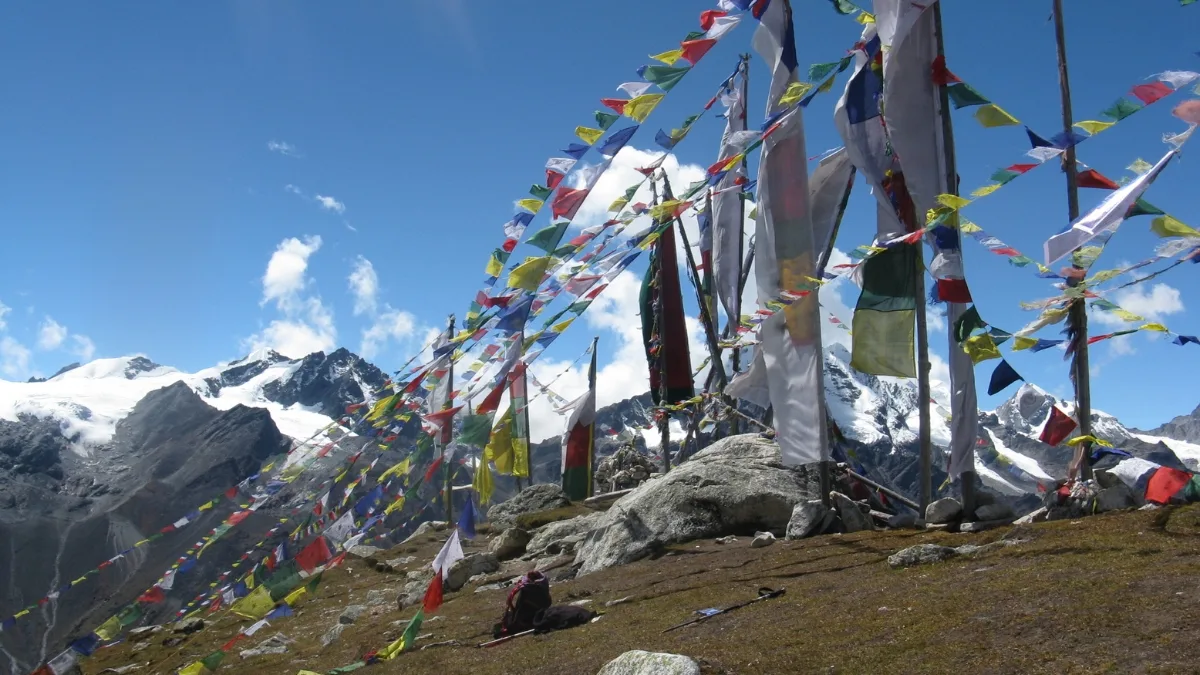
The Langtang Valley Trek reaches a highest point at Kyanjin Gompa, which is at 3,870 meters. The daily increase in elevation is gentle, making it suitable for beginners when they take time to get used to the altitude.
The Langtang Valley Trek is called a moderate trek because it has steady climbs, beautiful views, and comfortable walking distances. Most days, you walk about 5 to 7 hours and cover 8 to 15 kilometers. The trail goes through forests, open mountain meadows, and small villages.
This trek is perfect for people who have average fitness and want to enjoy a Himalayan adventure without very hard climbs or tough hiking. The slow and steady walking pace helps your body adjust to the elevation and reduces the chance of altitude sickness. This way, the trek is fun and enjoyable for almost everyone who takes their time and prepares well.
- Maximum Altitude: 3,870 m (Kyanjin Gompa)
- Optional Highest Point: 5,030 m (Tserko Ri viewpoint)
- Minimum Altitude: 1,310 m (Kathmandu)
Elevation Per Day:
- Kathmandu: 1,310 m
- Syabrubesi: 1,460 m
- Lama Hotel: 2,470 m
- Langtang Village: 3,430 m
- Kyanjin Gompa: 3,870 m
- Tserko Ri (optional hike): 5,030 m
- Trail Difficulty Rating: Moderate. It is suitable for beginners who prepare and acclimatize properly.
Tip: The gradual altitude increase and rest days at Kyanjin Gompa help your body adjust, reducing the risk of altitude sickness. The Langtang Valley Trek map also clearly shows elevation changes between each trekking segment, making planning easier.
Final Thoughts
The Langtang Valley Trek map is very important for planning a trip full of natural beauty and local culture near Kathmandu. You will travel through the green forests of Langtang National Park and visit peaceful places like Kyanjin Gompa monastery. You can also enjoy amazing mountain views from Tserko Ri peak.
This trek mixes beautiful nature, traditional culture, and a moderate level of adventure. It is great for both new and experienced trekkers who want a calm and relaxing Himalayan trip.
At Nepal Gateway Trekking, we take care of everything like permits, places to stay, and other details. That way, you can concentrate on enjoying the hiking and taking in the amazing surroundings. Our detailed trek map helps keep you safe, guide your daily plans, and make the most of every part of the Langtang Valley.
A memorable Himalayan journey awaits — explore the map, plan your route, or book your guided Langtang Valley Trek with Nepal Gateway Trekking today. Contact us now!
FAQ Section
Is the Langtang Valley trek suitable for beginners?
Yes, the Langtang Valley Trek is suitable for beginners as it's rated moderate difficulty with scenic trails and gradual elevation gains. This makes it a great first Himalayan adventure, though proper preparation like basic training is recommended to handle any challenges.
What is the total distance of Langtang Valley Trek?
The Langtang Valley Trek is about 70 to 80 kilometers total for the round trip. It usually takes 7 to 10 days to complete. Each day, you will walk between 5 and 15 kilometers. This distance is easy to manage and allows you to enjoy the beautiful views without getting too tired.
Where can I download a detailed trek map?
You can download a detailed trek map for the Langtang Valley Trek from the Nepal Tourism Board website or directly from Nepal Gateway Trekking, which offers free, up-to-date PDFs with key trails and elevations. These maps help you navigate safely and spot highlights like glaciers along the way.
What permits are required for Langtang Valley Trek?
For the Langtang Valley Trek, you need a TIMS card and a Langtang National Park entry permit, both of which can be obtained in Kathmandu or at the trailhead for a small fee. These permits ensure environmental protection and your safety during the trek.
How difficult is each day of the trek?
The difficulty of each day on the Langtang Valley Trek varies, with early days being easier with gentle uphill walks of 5–7 hours, while mid-days involve steeper climbs up to 3,800m that require more effort. Overall, it's moderate, allowing time for rests and acclimatization to make it enjoyable for most hikers.
What are the best season for trekking?
The best seasons for the Langtang Valley Trek are spring (March to May) and autumn (September to November). You get clear skies, mild temperatures, and minimal rain for safer hiking. These periods also offer the most stunning views of the mountains and valleys, making your experience more memorable.
Are guides and porters necessary?
Guides and porters are not strictly necessary for the Langtang Valley Trek if you're experienced, but they are highly recommended for beginners to handle navigation, altitude issues, and carrying gear. This support makes the trek safer and more enjoyable, allowing you to focus on the scenery rather than the logistics.
What are the Accommodation options along the route?
Along the Langtang Valley Trek, you will find simple places to stay such as tea houses, guesthouses, and lodges. These offer basic beds and warm meals, and sometimes hot water is available for showers. The cost is affordable, usually between $5 and $20 per night. These accommodations are run by locals and provide a warm, friendly atmosphere where you can rest well before each day’s walk.
